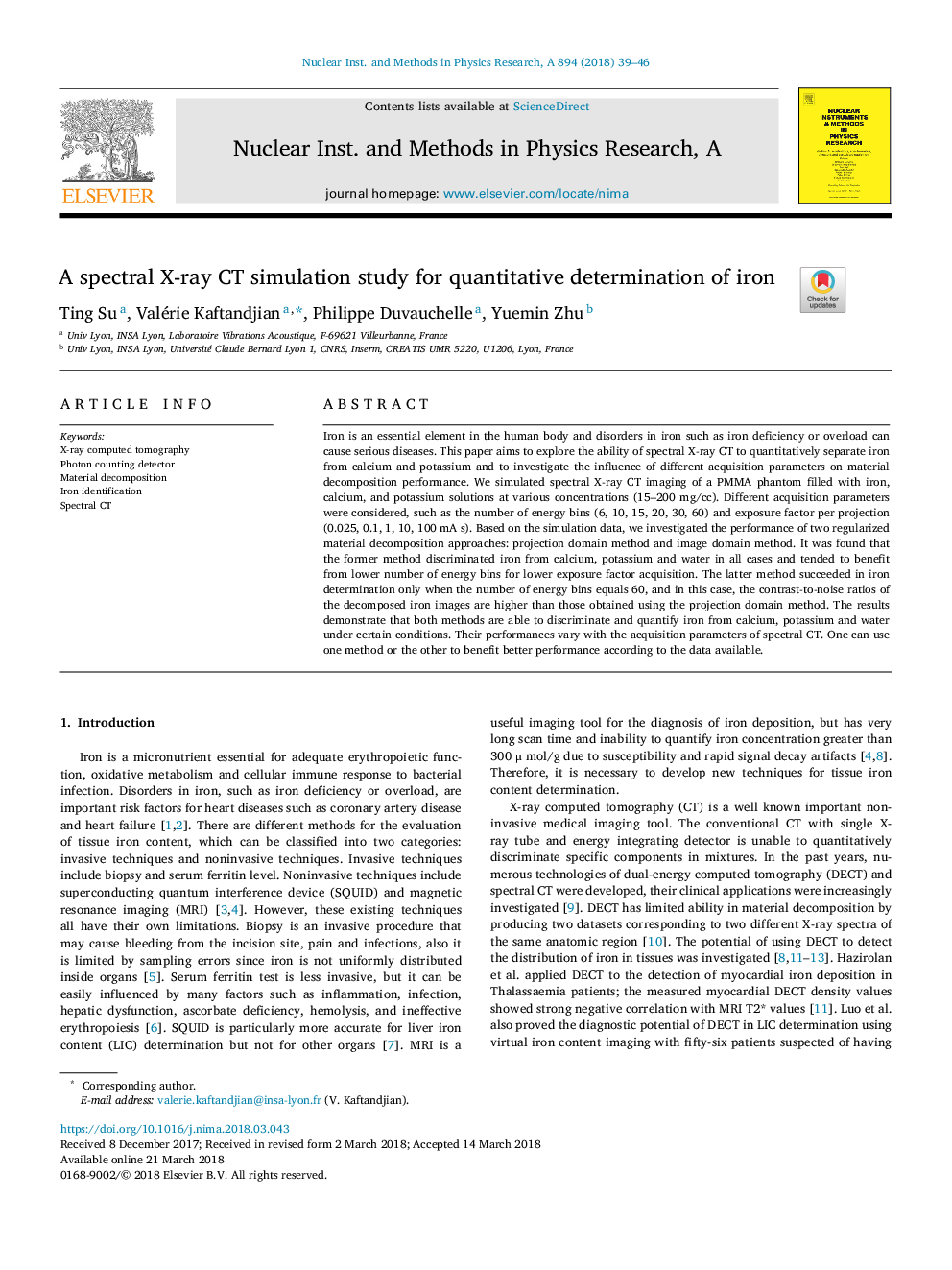| Article ID | Journal | Published Year | Pages | File Type |
|---|---|---|---|---|
| 8166303 | Nuclear Instruments and Methods in Physics Research Section A: Accelerators, Spectrometers, Detectors and Associated Equipment | 2018 | 8 Pages |
Abstract
Iron is an essential element in the human body and disorders in iron such as iron deficiency or overload can cause serious diseases. This paper aims to explore the ability of spectral X-ray CT to quantitatively separate iron from calcium and potassium and to investigate the influence of different acquisition parameters on material decomposition performance. We simulated spectral X-ray CT imaging of a PMMA phantom filled with iron, calcium, and potassium solutions at various concentrations (15-200Â mg/cc). Different acquisition parameters were considered, such as the number of energy bins (6, 10, 15, 20, 30, 60) and exposure factor per projection (0.025, 0.1, 1, 10, 100Â mAÂ s). Based on the simulation data, we investigated the performance of two regularized material decomposition approaches: projection domain method and image domain method. It was found that the former method discriminated iron from calcium, potassium and water in all cases and tended to benefit from lower number of energy bins for lower exposure factor acquisition. The latter method succeeded in iron determination only when the number of energy bins equals 60, and in this case, the contrast-to-noise ratios of the decomposed iron images are higher than those obtained using the projection domain method. The results demonstrate that both methods are able to discriminate and quantify iron from calcium, potassium and water under certain conditions. Their performances vary with the acquisition parameters of spectral CT. One can use one method or the other to benefit better performance according to the data available.
Related Topics
Physical Sciences and Engineering
Physics and Astronomy
Instrumentation
Authors
Ting Su, Valérie Kaftandjian, Philippe Duvauchelle, Yuemin Zhu,
